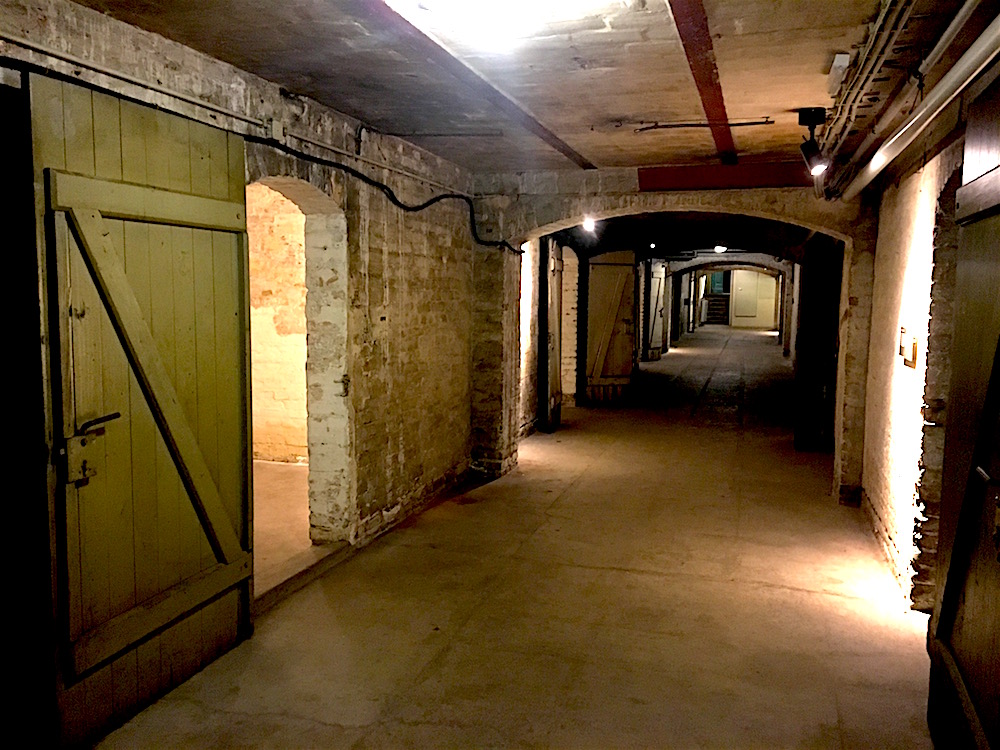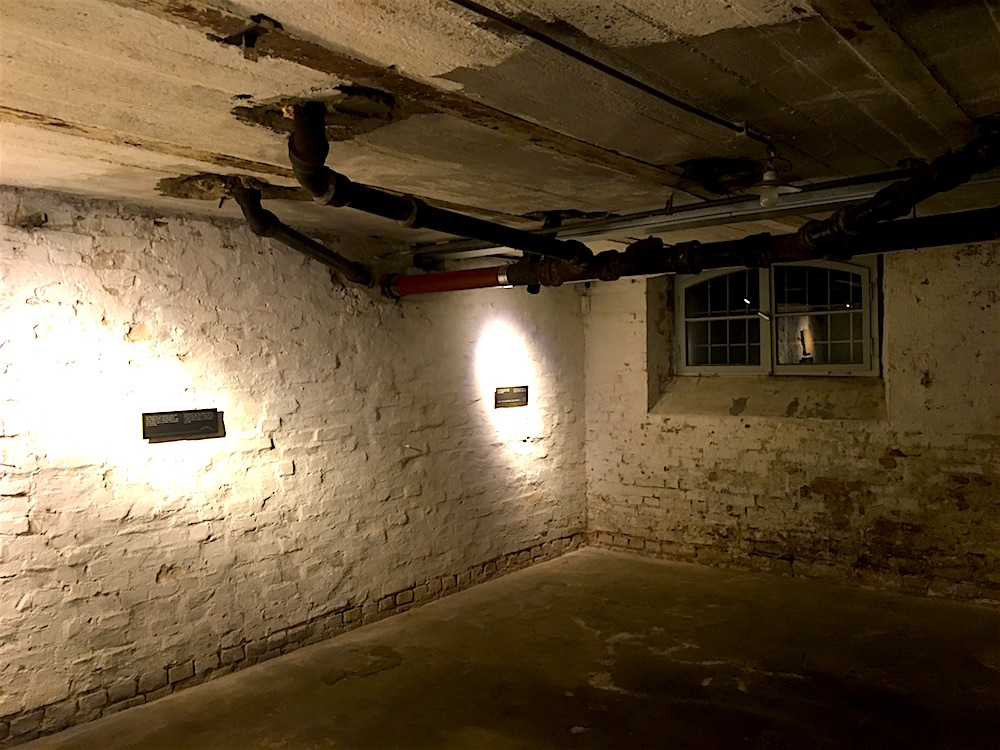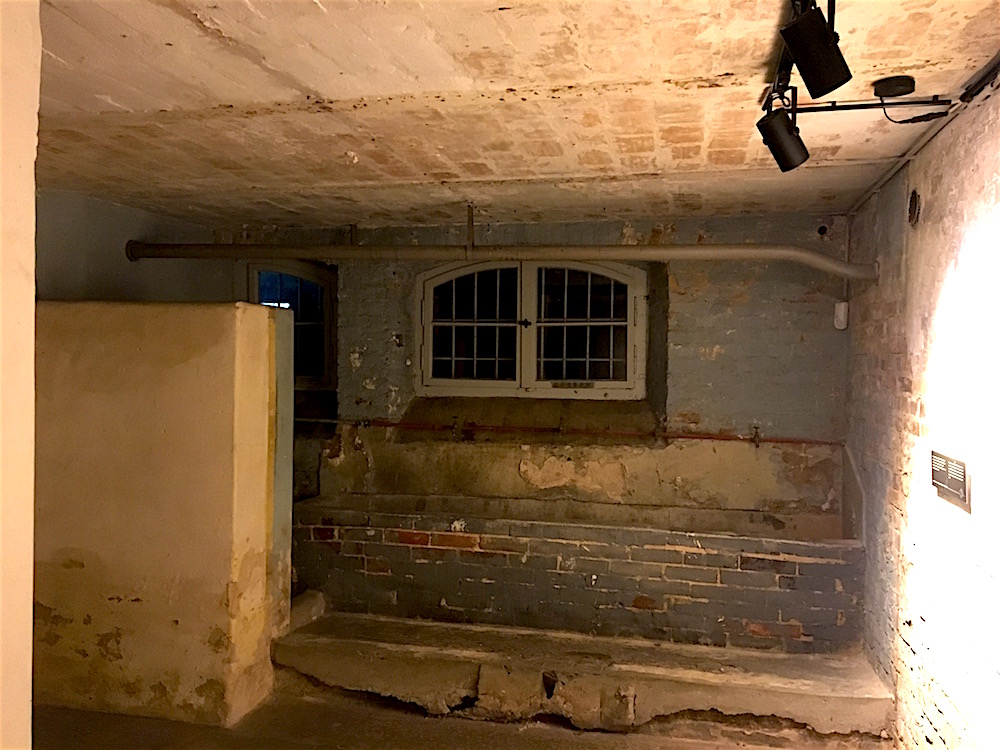The Way to the Memorial
This memorial site in Berlin’s Tempelhof district is at once one of the least known and one of the most impressive.
I have known Papestrasse for a long time, because the Südkreuz station was called Papestrasse before it was converted into one of the main long-distance train stations in Berlin. But I discovered the publicly accessible basement of a former barracks building only a few years ago. This memorial has also only existed since 2013. It was a long way until then. Rediscovered in the late 1970s, the site became a stop on political city tours in the 1980s and led to the founding of a history workshop in 1991, a grassroots movement that has been widespread in Germany since the 1970s, mostly carried by people from the neighborhood. In this case, some members even lived in the house in question themselves. Through the discovery of almost 80-year-old prisoner scribblings on the walls and through the reports of contemporary witnesses who came forward in response to newspaper appeals, the basement rooms could be clearly identified as the site of the prison. However, it took more than ten years before the way could be cleared for a permanent exhibition with the parties involved and with the necessary financial resources.

Stories of Life and Death
So what is particularly impressive about this place? On the one hand, it is the above-described story of its rediscovery due to civic commitment. This also refers to the further work, to the research of biographies, of victims as well as of perpetrators. The documented individual stories of life and suffering make the past of the place much more tangible than just the empty rooms would. Yet the walls are not hung full of old interrogation protocols, receipts, discharge certificates, medical records, photos of traces of abuse, death certificates, or works that deal artistically with the place. Visitors do not run the risk of losing track of the more than 500 prisoners known by name and their stories, which have been passed on more or less detailed. No, the documentation on the walls is sparse, and in a separate room, individual fates can be traced with the help of folders. Another room commemorates the names of those murdered here with an artistic light installation. But the former detention rooms essentially speak through themselves.

Symbols of Contempt for Humanity
And that is another impressive peculiarity of this memorial site: it is largely preserved as it was used from March to December 1933 – that is, only for a relatively short time. In former times, one spoke of wild concentration camps, today rather of early concentration camps. It is an example of a tightly meshed system of partly improvised places of detention and torture with which the National Socialists initially secured their power. After the burning of the Reichstag and the subsequent Ordinance for the Protection of the People and the State – virtually the abolition of constitutional freedoms – of February 28, 1933, some 220 such protective custody sites were set up in Berlin, mostly at the locations of SA storm headquarters or – as in Papestrasse – paramilitary barracks. Only later, from the end of 1933, were concentration camps more systematically established and operated, and those large, mostly remote facilities emerged that have entered the collective memory and become symbols of National Socialist contempt for humanity: Auschwitz, Sachsenhausen, Dachau.

An almost normal Cellar
The cellar in Papestrasse is something completely different. Actually just the ordinary and emptied storage cellar of an apartment building. And that’s what makes it so impressive: there are no camp gates with cynical slogans, no barbed wire fences and watchtowers, no wooden multiple bed frames, no ovens. This place is free of such iconography of evil, which is familiar to us and at the same time creates distance. The abolition of democracy through the deprivation of freedom, through the persecution of dissenters, and through the deliberate spread of fear took place in our own basements, where our parents and grandparents lived. Not in the forest and on the heath aside society, but within it, in the cities, villages, residential areas.
ssA contemporary witness from the house next door on Papestrasse recalled in 1980: Then, as schoolchildren, we saw from the cellar door and through a window how men in the cellar corridor put people over such a sawhorse and beat them. (quoted from the catalogue, edited by Irene von Götz and Petra Zwaka: SA-Gefängnis Papestraße. Ein frühes Konzentrationslager in Berlin, Berlin 2013, p. 84).

Visible Beginnings
This is the important insight I gained from my visit to the SA Prison Papestrasse memorial site: Only by connecting with the places and with the people who were our parents, grandparents, great-grandparents and who belonged to their social environment can we keep the memory of the history of National Socialism alive as our own history. This is especially true in the time that is now dawning when there are no longer any living contemporary witnesses. Genealogy, family research, asking about our own ancestors and what they did and thought, has a very decisive role to play in this. How vulnerable democracy is to attack is something we see in the news every day these weeks. Resist the Beginnings (actually referred to falling in love by the Roman poet Ovid) has become a common saying in reference to dictatorship and terror.
Here in the cellars on Papestrasse – nowadays with the address of Werner-Voss-Damm 54 a –, the beginnings were visible and remain so to this day thanks to the dedicated members of the History Workshop.
Memorial Site SA Prison Papestrasse
Werner-Voss-Damm 54 a
12101 Berlin
Internet: www.gedenkort-papestrasse.de
Opening hours:
Tuesday, Wednesday, Thursday, Saturday and Sunday: 1 p.m. to 6 p.m.
Closed Monday and Friday
Admission is free of charge.
Currently closed due to the pandemic.
